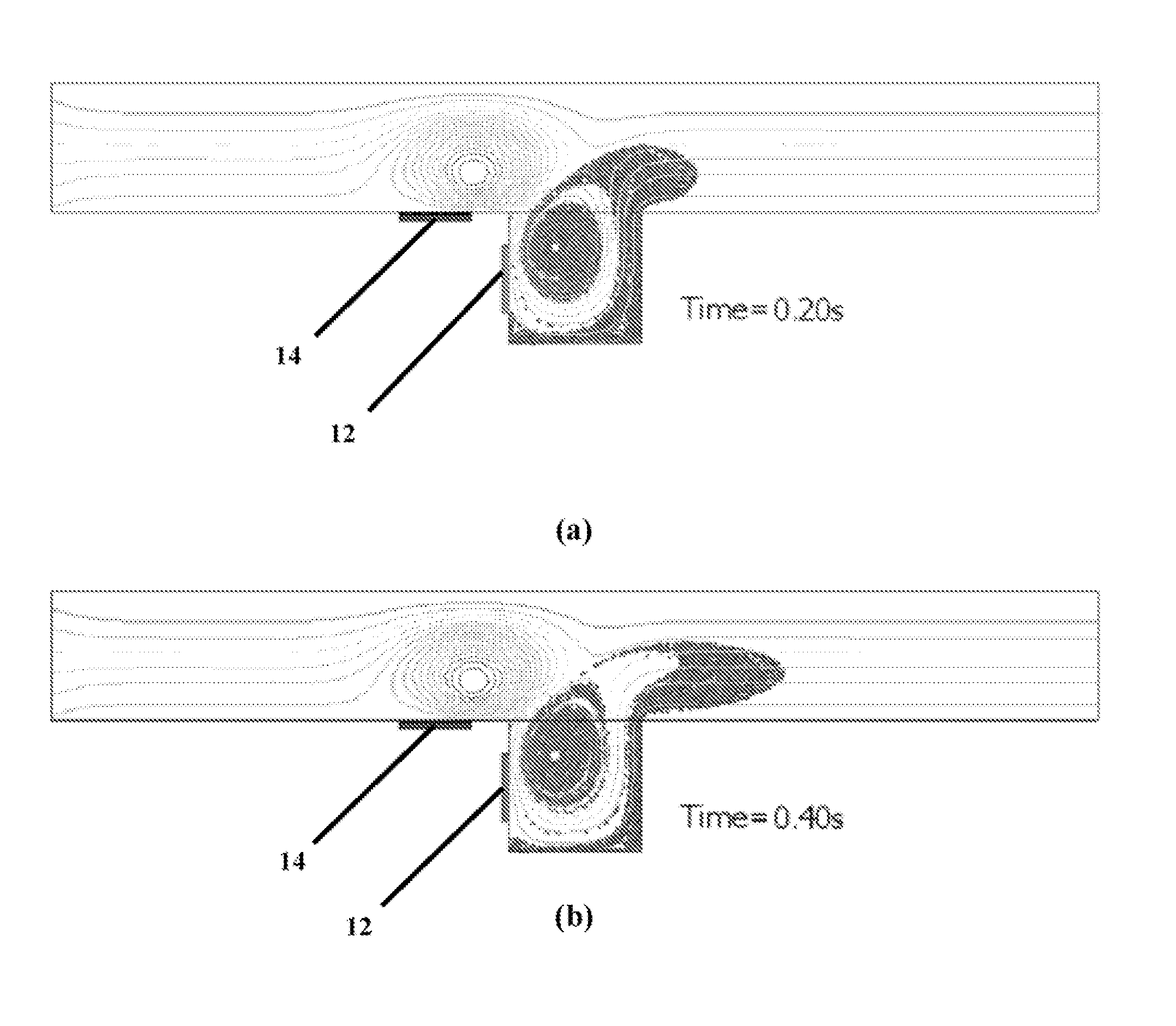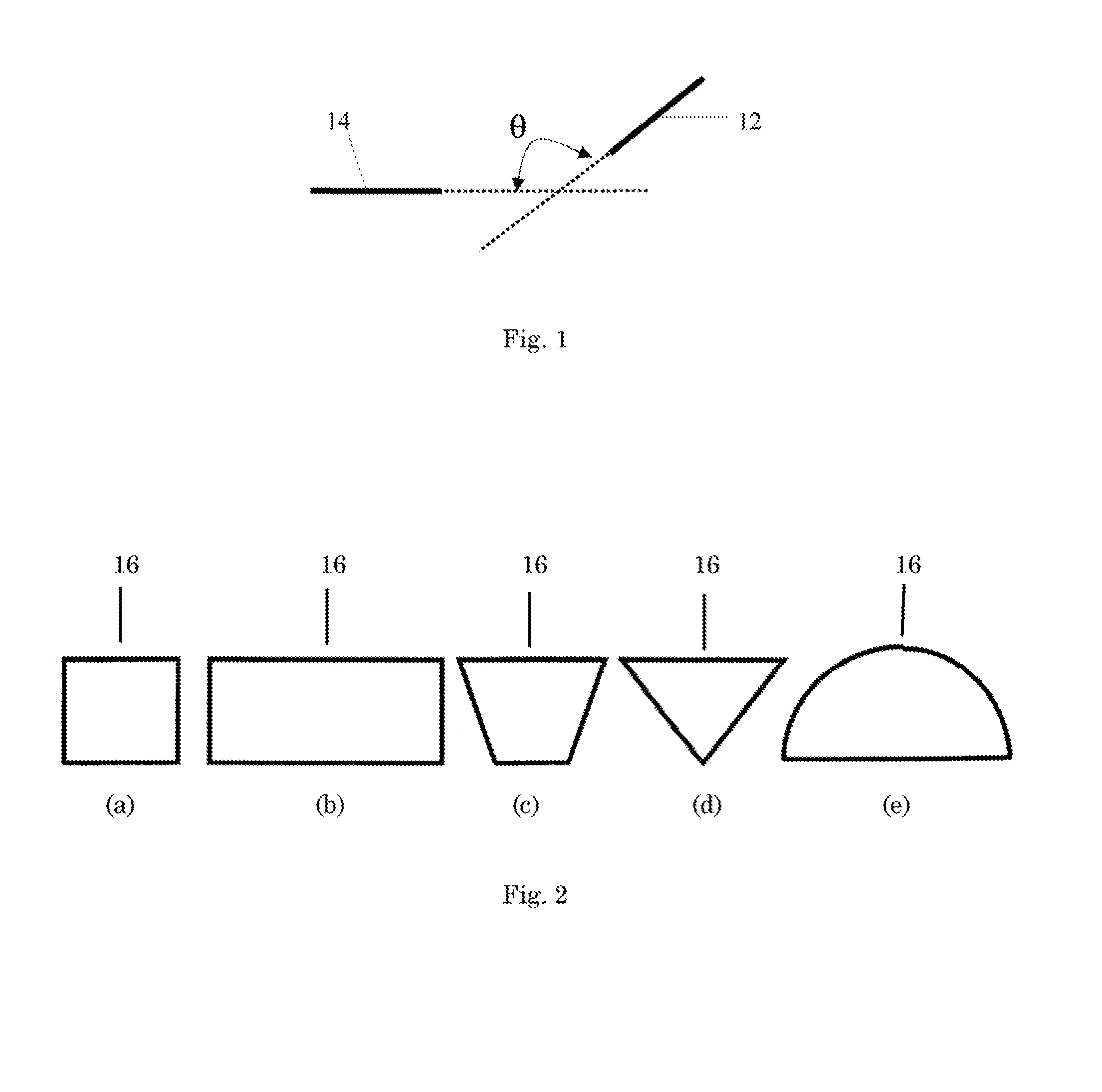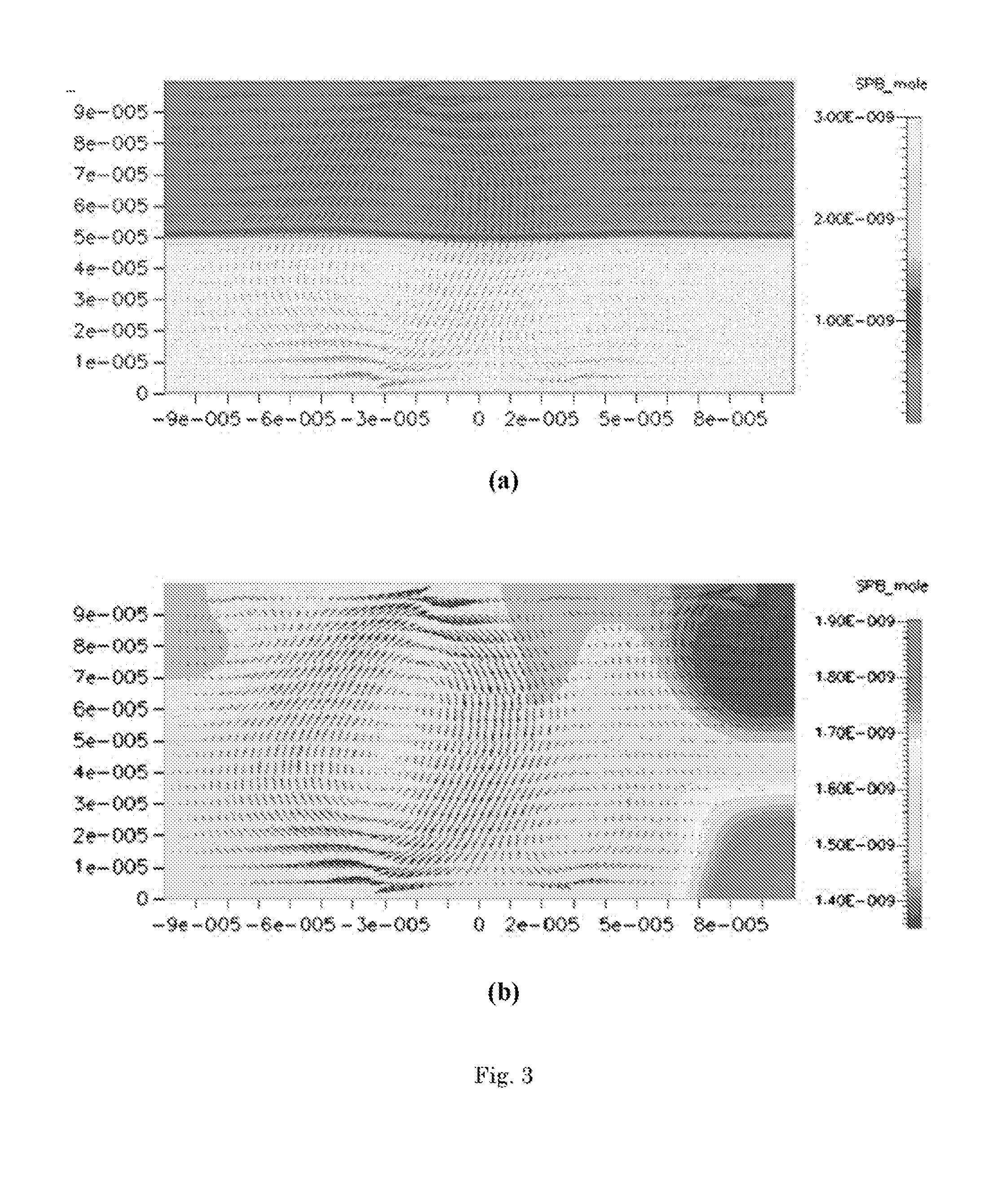Methods and systems employing electrothermally induced flow for mixing and cleaning in microsystems
a microfluidic system and flow technology, applied in the field of microfluidic system devices and methods used for mixing and cleaning, can solve the problems of low power requirements of systems, achieve low power requirements, facilitate measurement, and facilitate the effect of controlling device functionality
- Summary
- Abstract
- Description
- Claims
- Application Information
AI Technical Summary
Benefits of technology
Problems solved by technology
Method used
Image
Examples
Embodiment Construction
[0038]Traditionally, microdevices use electric fields (AC or DC) as a source of energy to induce flow of buffer using electroosmosis, transport and separation of samples using electrophoresis, or transport of particles using dielectrophoresis. In this context, the present invention focuses on the use of an electric field to facilitate the transport and mixing of two or more analytes or liquid streams, as well as cleaning (removal of particles or analytes) of devices using electrothermally induced fluid flow.
Electrothermally Induced Fluid Flow
[0039]When an electric field is applied to a buffer, it induces a temperature gradient in the buffer solution due to Joule heating. This, in turn, induces variations (non-uniformities) in the dielectric property of the buffer. The non-uniformity in the dielectric property results in a body force being exerted on the liquid and, consequently, a flow motion is observed. The present invention utilizes this electrothermally induced flow motion to ac...
PUM
| Property | Measurement | Unit |
|---|---|---|
| frequency | aaaaa | aaaaa |
| width | aaaaa | aaaaa |
| width | aaaaa | aaaaa |
Abstract
Description
Claims
Application Information
 Login to View More
Login to View More - R&D
- Intellectual Property
- Life Sciences
- Materials
- Tech Scout
- Unparalleled Data Quality
- Higher Quality Content
- 60% Fewer Hallucinations
Browse by: Latest US Patents, China's latest patents, Technical Efficacy Thesaurus, Application Domain, Technology Topic, Popular Technical Reports.
© 2025 PatSnap. All rights reserved.Legal|Privacy policy|Modern Slavery Act Transparency Statement|Sitemap|About US| Contact US: help@patsnap.com



